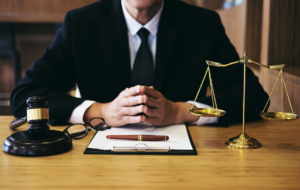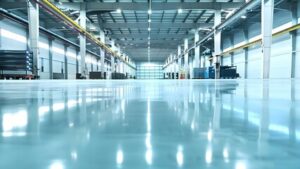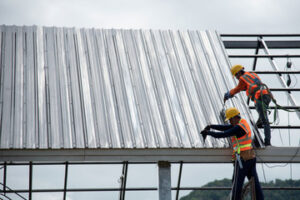Bold Vision SEO is about understanding your audience’s needs and providing solutions through your website or landing page. It’s also about making sure your content can be found by search engines (like Google) and that the content meets certain standards like best practices.

Considering that organic searches drive a lot of traffic, it’s important to understand how SEO works. This guide will help you get started.
Keywords are the words that search engines use to find content. They are a key part of search engine optimization (SEO). In order to rank well in SERPs, it’s important that your keywords align with your audience’s intent. This means that your content should be able to answer the questions they’re asking with relevant, helpful information. To do this, it’s essential to understand how search engines work.
Search engines use keywords to identify what a page is about, and then match it with searches from users who are looking for that topic. A keyword is usually a word or phrase that describes the main idea of the page. It can also be a question or adjective that describes the subject of the page, such as “Where to buy organic dog food” or “What is business process management?”
Singular keywords have high search volume and tough competition, making them challenging to rank for. For example, if your institution tries to rank for “MBA degree,” you’ll likely face strong competition from larger educational institutions and popular online degree providers.
The best way to target singular keywords is by creating a keyword cluster, which includes a pillar page and related subpages that focus on the same search intent. This approach is more efficient than targeting individual keywords, and it can help you avoid keyword cannibalization. This is a problem that occurs when multiple pages on your site contain the same keyword, which confuses search engines and can affect your ranking.
Another aspect of a good SEO strategy is understanding the differences between short-tail and long-tail keywords. Short-tail keywords are one to three-word phrases that focus on a broad topic, such as “MBA degree” or “online MBA programs.” They have a lot of competition and it’s difficult to appear in the top 10 results of Google SERPs. Long-tail keywords are more specific and have less competition. They can be more effective at generating clicks and increasing traffic to your website.
Taking an intentional approach to keyword research can help you uncover untapped ranking opportunities, better understand prospective students’ needs, and create content that resonates with them. To learn more about how to effectively incorporate keywords into your higher education marketing strategy, download our SEO Keyword Research Master Guide.
Content
Content is one of the most critical components of SEO (search engine optimization). Search engines use quality content to provide relevant and accurate results for searchers. However, creating high-quality content is not easy and requires a lot of time and effort. Fortunately, there are several ways to improve the quality of your content and optimize it for SEO.
One of the most important factors in SEO is keyword research. This is because keywords are what search engines use to determine what kind of content a user is looking for. By using the right keywords, you can ensure that your content is relevant to what people are searching for.
Another factor is how well your content is structured. For example, it should be organized into short paragraphs with subheadings and bullet points, which make it easier for users to read and scan. It should also be free of distracting elements, such as excessive ads or pop-ups. Additionally, it is important to keep in mind that search engines prefer in-depth content that satisfies user intent.
Finally, it is important to promote your content. This can be done through social media, email marketing, influencer partnerships, and content syndication platforms. By promoting your content, you can reach a wider audience and increase its visibility and authority.
While the term “content is king” has become overused, it still applies. To succeed in SEO, you need to create high-quality and optimized content that reflects the needs of your target audience. In addition, your content must be updated regularly. This will not only improve your website’s search rankings, but it will also help you gain a competitive advantage over your competitors.
To make sure your content is effective, you must track its performance and adjust it as needed. This can be done by analyzing key metrics, such as organic traffic, site speed, and conversion rate. By tracking these metrics, you can identify areas for improvement and better meet the needs of your audience. This will ultimately lead to more qualified leads and higher sales. By following these tips, you can create content that is both informative and engaging, resulting in better SEO performance.
Link building
Link building is one of the most important aspects of SEO. It involves promoting your content through other websites and social media channels to attract visitors to your site. The more visitors you get, the higher your website’s ranking in search engines. This helps you attract customers and boost your business’s profits. But you must be careful to use the right techniques to build high-equity links that are beneficial to your business. You should only engage in natural linkbuilding, rather than buying links or using other manipulative tactics. Otherwise, you may get banned from Google’s search results.
The most effective way to build links is to create valuable and useful content. This can be a blog post, video, or infographic. People will naturally link to your content if it is unique and informative. Creating a quality content can also help you gain a good reputation and establish yourself as an expert in your field.
You can find out which sites are linking to yours by entering them into the Ahrefs’ backlink metric. This metric is used to determine a webpage’s authority and can help you make better decisions about which keywords to target. It is also helpful to compare your own backlink profile with those of your competitors. This will give you a clearer picture of your competition’s SEO strategy and will help you identify opportunities for improvement.
While many businesses focus on creating quality content, they often forget about the importance of link-building. Investing in link-building can lead to more traffic, which in turn leads to more sales. But remember that a great product and content should be created for the user, not the search engine.
Getting links from authoritative websites can help you rank higher in search engines, but it is important to avoid spammy practices like posting on forums and Q&A sites. These links are not likely to provide much value, and they can even hurt your rankings. If you want to succeed in your link-building efforts, you need to think outside the box and come up with unique ideas that will make people excited about your content. For example, if you have a new tech tool that can save your users time and effort, write a detailed post about it. This will attract a lot of attention from your competitors, and it may lead to a number of links that you didn’t even ask for!
Analytics
A successful SEO strategy requires comprehensive website analytics and in-depth data analysis. This process can help you pinpoint issues and make decisions that drive more traffic and conversions. It also helps you prioritize tasks, get approval for budgets, and optimize your search engine optimization strategy.
Using predictive analytics in SEO can help you avoid costly mistakes and predict future outcomes. This is accomplished by analyzing large data sets and applying advanced algorithms to them. The resulting models can predict keyword performance, user behavior, and other important factors that influence SEO strategies.
Predictive analytics is a powerful tool for increasing ROI and improving search engine optimization (SEO). It helps marketers understand their audience and identify the best keywords to target. It can also be used to identify potential opportunities and threats. In addition, it can improve the effectiveness of online marketing campaigns by identifying the most effective channels and optimizing the website experience.
Measuring SEO performance requires defining and tracking metrics and KPIs. Metrics are data points that measure a specific aspect of your site or campaign, while KPIs are measurable values that indicate success. Metrics include things like keyword rankings, organic traffic, and visitor engagement.
You can use free SEO tools like Google Analytics and Semrush to track these metrics. These tools allow you to create SEO reports, track competitor’s sites, and monitor your own site’s performance. However, you should keep in mind that the results of these tools are based on current data and can change as the SEO landscape evolves.
It’s essential to track SEO metrics and analytics on a regular basis. This allows you to see your progress, compare your results with those of your competitors, and identify areas where you can improve. SEO analytics can help you determine how much time and money you should invest in different tasks, such as keyword research, content creation, link building, and technical SEO.
SEO analytics also helps you decide which SEO tools to use. Many of these tools can be expensive, so you need to know whether their price tag is worth the investment. You can also use analytics to measure the ROI of your paid tools, such as a paid rank tracker or SEO crawler.







